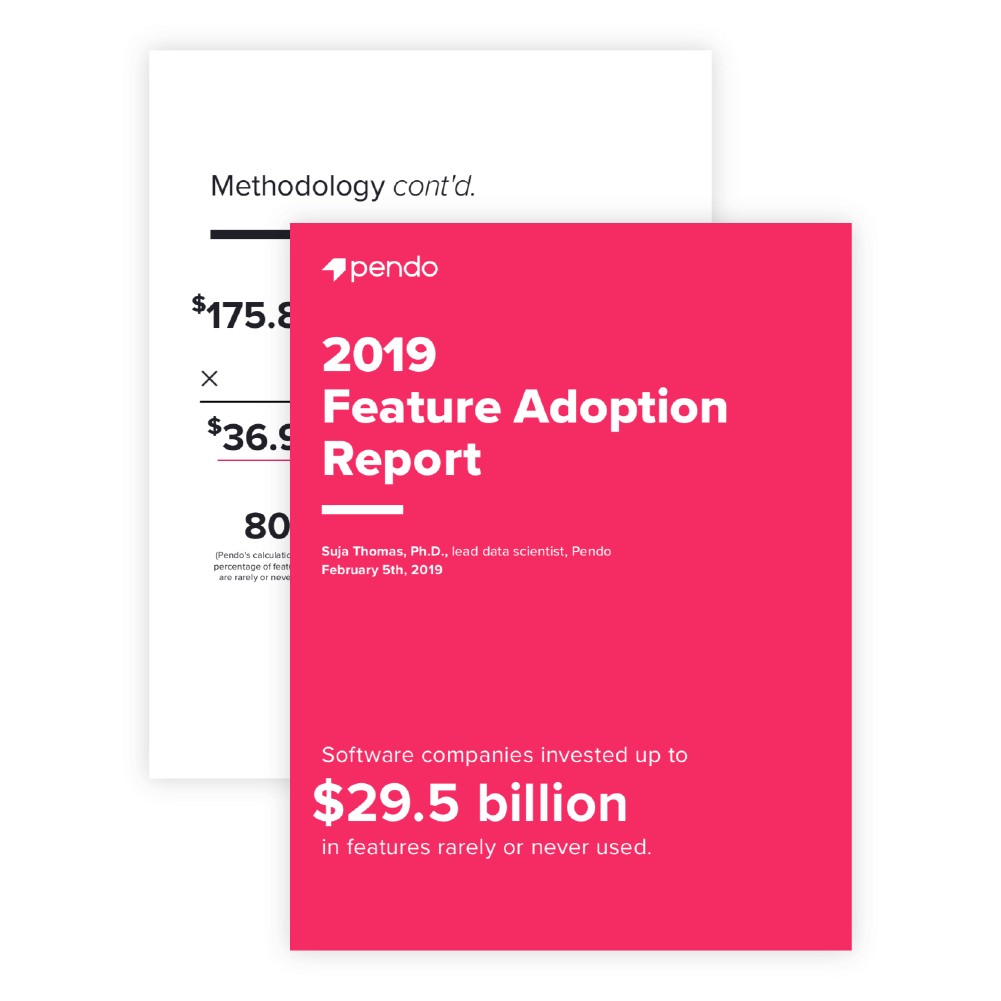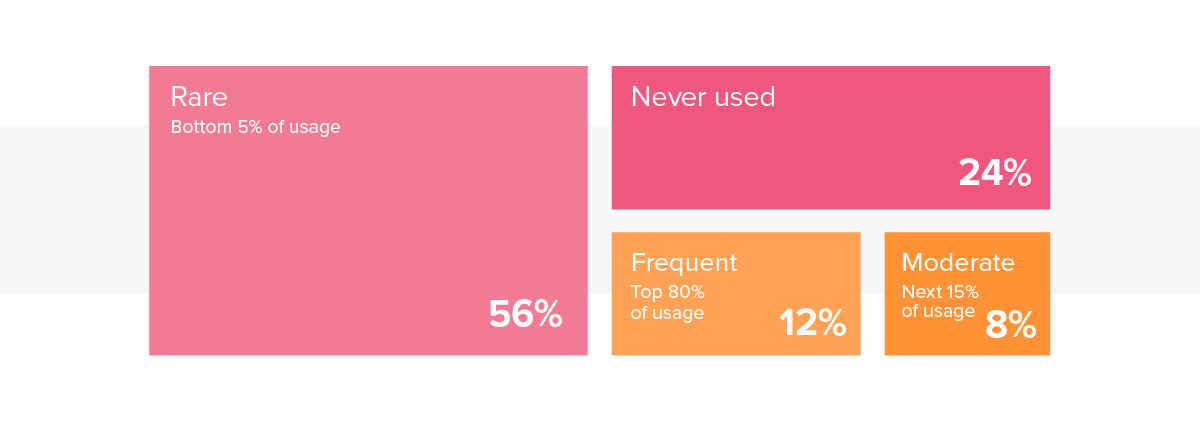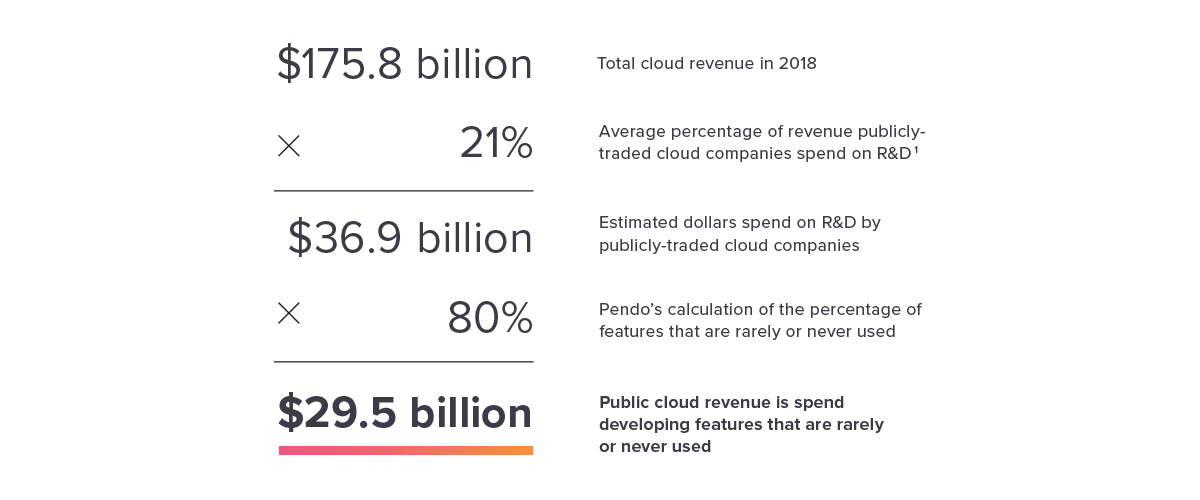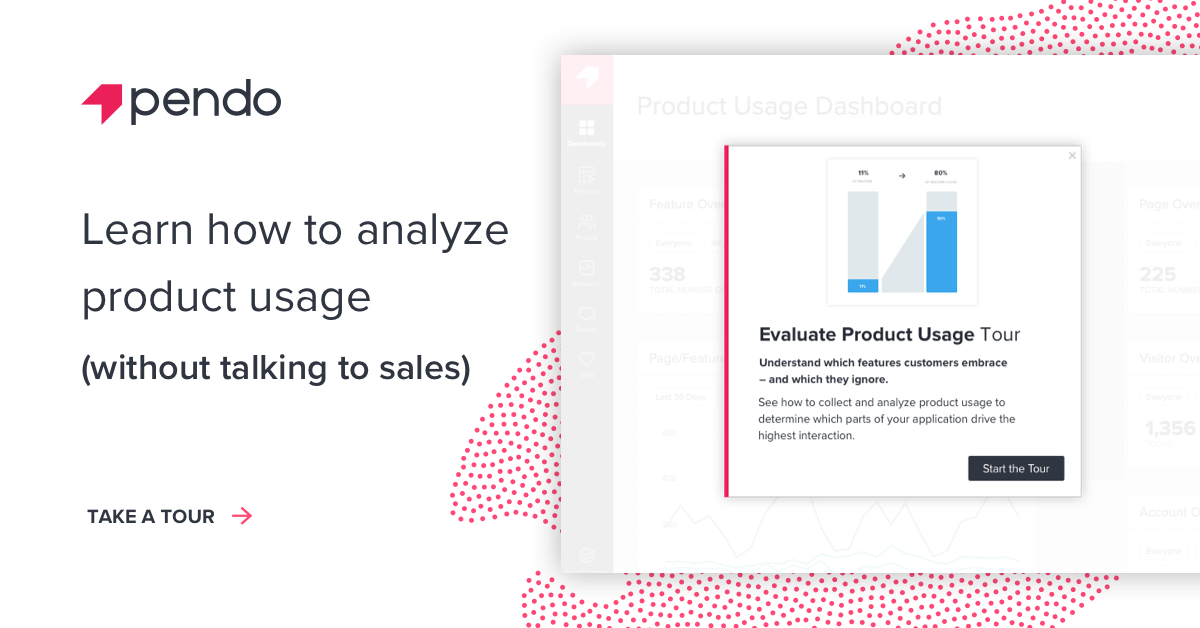
Table of Contents
In a rush?
Download the PDF for later
Executive Summary
Customers are fickle. Users are distracted. Competition is fierce. Investors are eager for returns. These are the daily pressures of today’s software organizations. As the pace of innovation increases in a race to please customers, engage users, and build the best products, the most limited resource is engineering. Yet many organizations still end up wasting both time and money when they commit their engineering resources toward features their customers rarely even use.
In this inaugural report, we looked at the impact, in real dollars, of underutilized software features on the global software industry. To conduct this study, we analyzed feature usage across 615 Pendo subscriptions for customers who have used Pendo for more than a year. We initially planned to create a benchmark for feature adoption for our customers, but quickly realized this study had broader implications.
Our findings challenge software executives and digital product leaders to take a hard look at the features their teams are developing, as well as the processes and tools used to analyze their effectiveness. After reading this report, investors and shareholders, in particular, may wonder whether their dollars are being put to the best use.
Software product leaders should evaluate the time and effort engineers spend building features customers rarely use.
Investors should question whether their dollars are being put to the best use.
Key Findings
Based on an aggregation of anonymized product usage data, Pendo determined that 80 percent of features in the average software product are rarely or never used. Publicly-traded cloud software companies collectively invested up to $29.5 billion developing these features, dollars that could have been spent on higher value features and unrealized customer value.
Please fill out the form below to read the rest of this e-book.
Does feature usage mirror the Pareto principle?
To see how feature usage maps to the 80/20 rule, we organized the data into four categories: frequent, moderate, rare, and never used.

Our research also showed that companies can increase daily usage of all their features by focusing on the adoption of core features.
For example, our study found that, after their first year of using Pendo to improve their products, our customers experienced a 50% increase in daily feature use. The percent of unused features, meanwhile, declined by nearly 25% during that time. Simply by deploying at least 25 in-app guides to drive feature adoption, customers could increase the number of features used daily by 25%.
After a year of using Pendo, customers experienced…
- 50% increase in daily feature use
- 25% decrease in unused features
- 25% increase in daily feature use after using guides
Methodology
Our research team began this study to determine whether feature usage across our customer base mirrors the Pareto principle, which theorizes that 20 percent of activities generate 80 percent of results. (A feature in Pendo is delineated by a “tag.” We presume that customers have tagged parts of their product that they expect to be used on a daily, weekly, or monthly basis.)
Using an aggregation of anonymized Pendo usage data over a three-month period, we determined that an average of 12% of features generate 80% of average daily usage volume. Meanwhile, 80% of features are rarely or never used. These percentages vary only slightly by size of company, making us confident that we can use them as a proxy for the broader software industry. The sample also included companies from numerous
verticals including banking/finance, HR technology, education, shipping and logistics, healthcare and e-commerce.
To extrapolate across all public software companies, we used Gartner, Inc.’s latest calculation of combined public cloud revenue. In its September 2018 report by Fred Ng, et al., Gartner forecast that public cloud revenue would reach $175.8 billion in 2018. To estimate research and development costs, we took an average of reported R&D expenses from 54 publicly-traded software companies on the Bessemer Venture Partners Emerging Cloud Index.
We divided that number by 80% to total $29.5 billion, our estimate of dollars spent by public cloud companies on features that may rarely or never be used. Using this methodology, a software company with $50 million in revenue might spend $8.4 million developing features customers rarely or never use.
Methodology cont’d.

*Source: SEC filings for the majority of companies on the BVP Emerging Cloud Index
Recommendations
The findings in this report should prompt every product leader to consider how the features that make up their software products are being used. Are features designed for daily use achieving that frequency? Are those used less often actually delivering value, or are they simply hard to find? Here are some general recommendations every product leader should follow:
By regularly evaluating, understanding, and driving feature adoption, software organizations can ensure customers get the most value from their products, engineering time is well spent, and their hard-earned revenue doesn’t go to waste.


